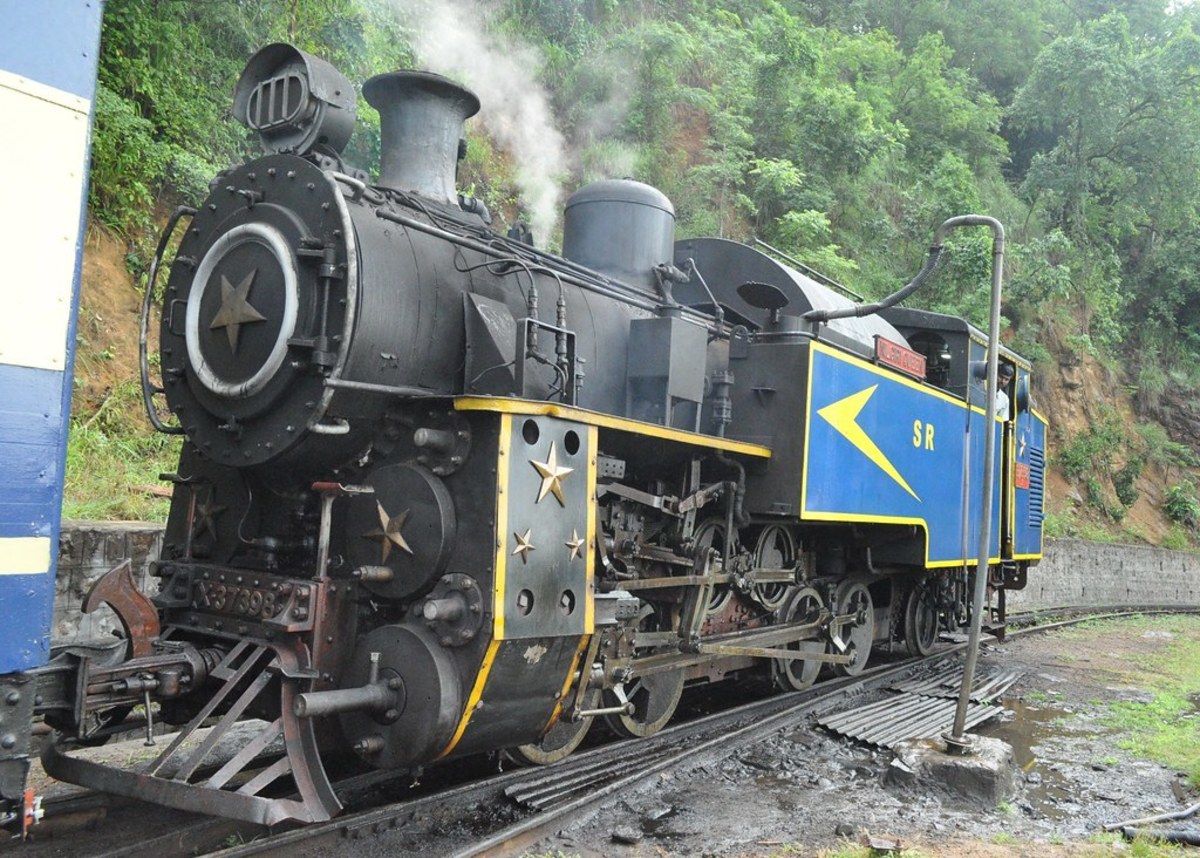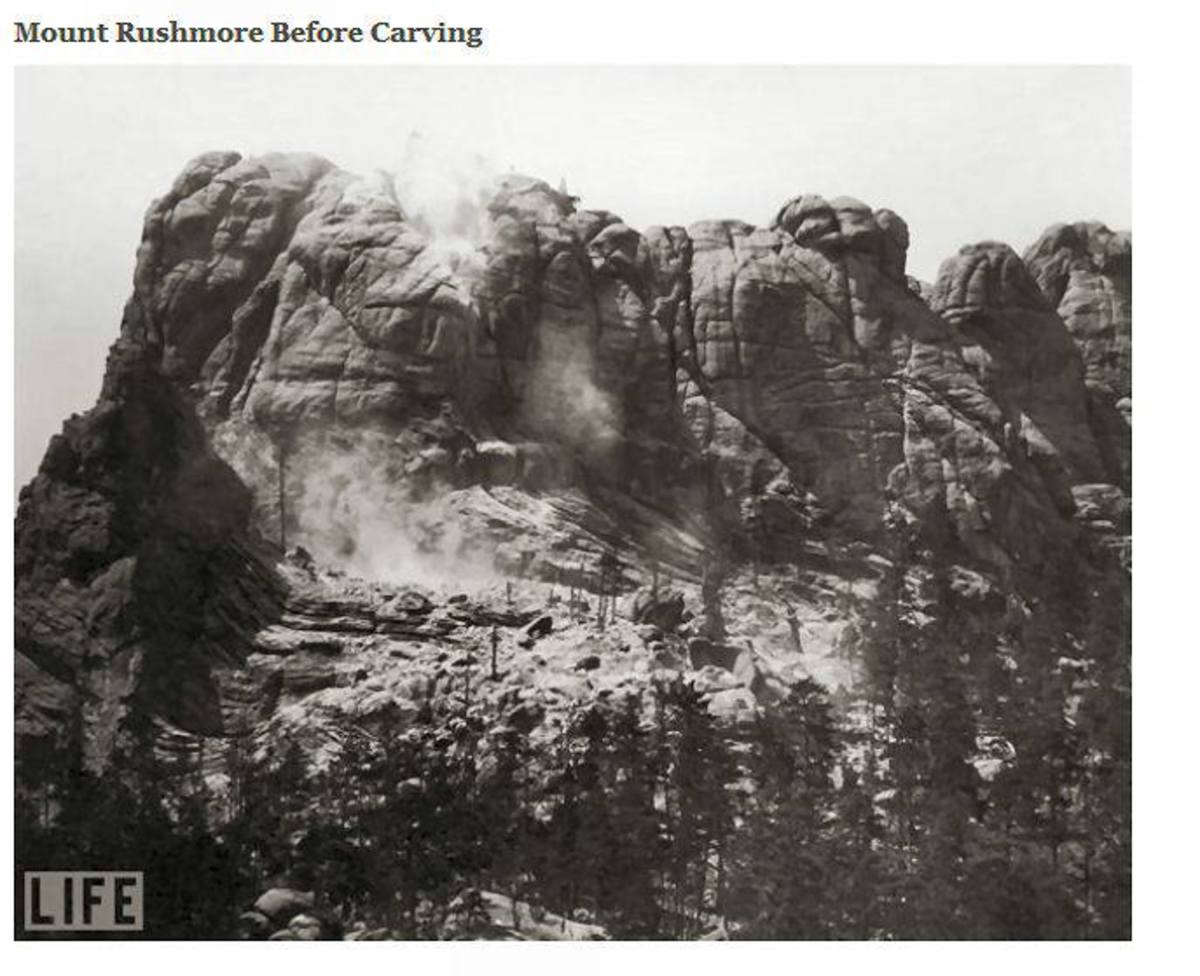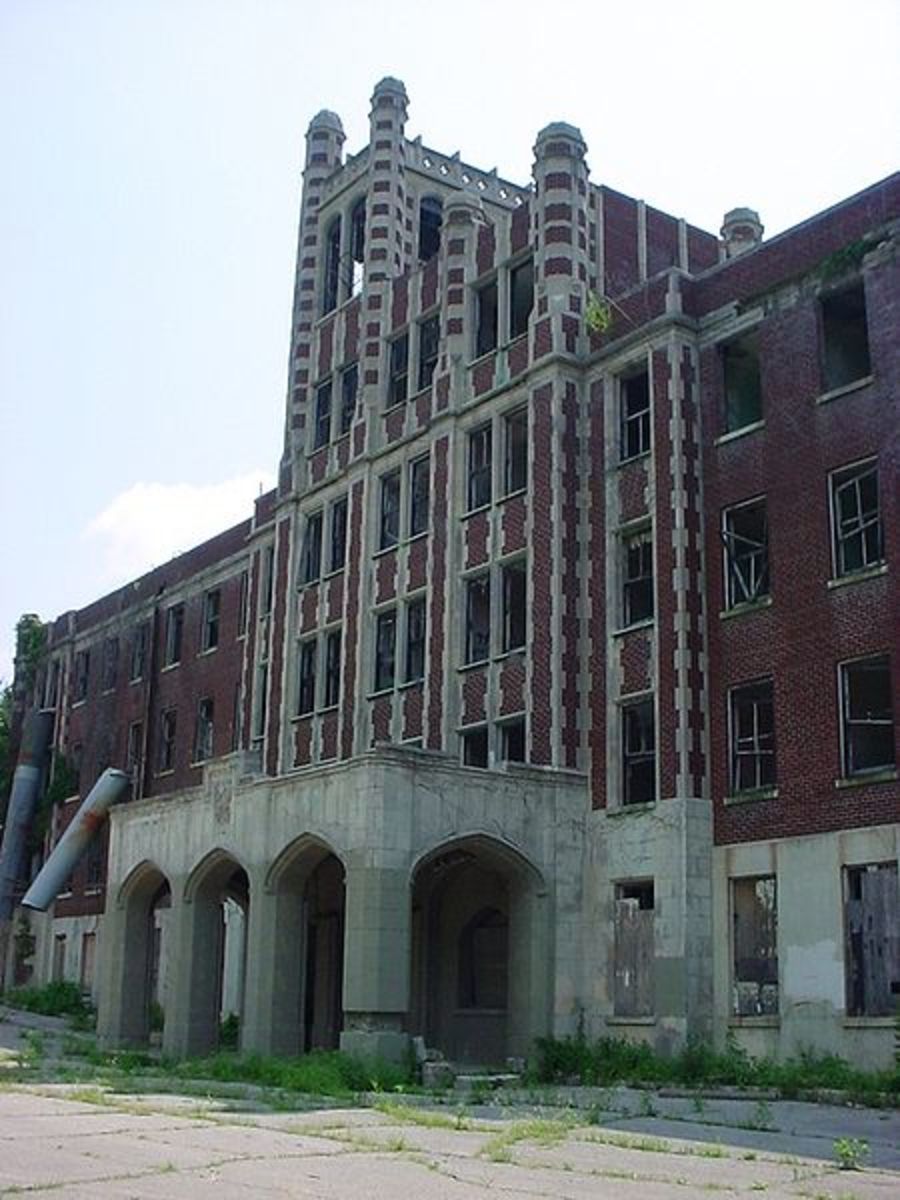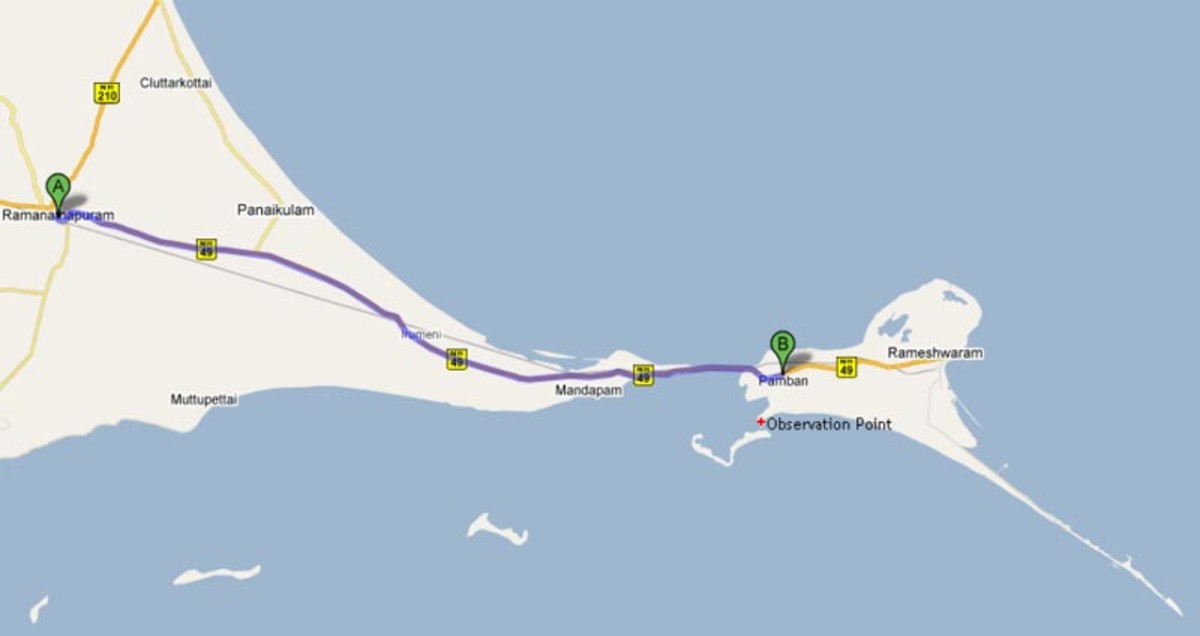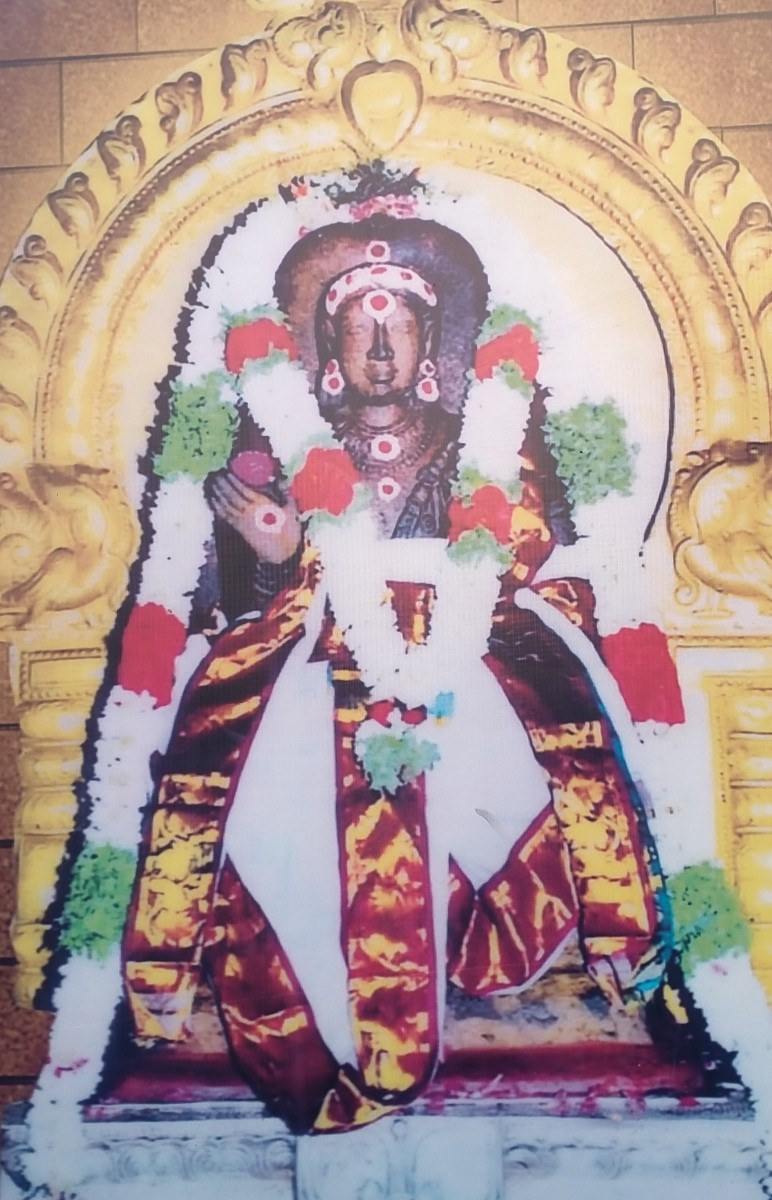- HubPages»
- Travel and Places»
- Visiting Asia»
- Southern Asia»
- India
Ooty- the Queen of Indian Hill-Stations!
India's Queen of Hill-stations- Ooty

History!
Originally a tribal land occupied by an aboriginal tribe called 'Todas', it was not before 1603, when Ooty first came into the eyes of the east India British company. Rev. Jacome Forico was the first documented foreigner who traveled to this pristine hill-station in 1603.
Located within the deep recess of the 'Nilgiri' mountain range or the 'Blue hIlls' (the name's origin owing to the never-ending stretch of the eucalyptus trees lined along her slopes), Ooty and her surrounding hills were the prized possession of the powerful Muslim ruler Tipu Sultan till 1799, when it came into the possession of the East India Company by the treaty of Srirangapatna.
It was in the year 1818 when english surveyors on visiting this heavenly abode and submitting a report of the same, caught the attention of John Sullivan- collector of Coimbatore.
John Sullivan visited the place with his entourage and compared beauty of the land to Switzerland. He took it upon himself to let this secretly guarded hill-station be known to the people. So enthralled was John Sullivan with Ooty that he built himself a bungalow (the first by any foreigner on this land) in 1819. Sullivan is also credited with the first road construction from Mettupalayam to Ooty.
Once accessible by road, Ooty became the 'Summer Capital' of the Madras presidency and the preferred destination of almost all British officials residing in south of India during the summer months. Most of the present official buildings of Ooty are a glorious reminder of the British Raj grandeur.
The Nilgiri Mountain Railway, built in 1908 (and part of the UNESCO Heritage site) made Ooty further accessible to not just the British but the common people as well.
The gorgeous valleys, the pristine grasslands, the towering beauty of the surrounding Nilgiri Hills, and its delightful climate made the Britishers dub Ooty as the 'Queen of Indian Hill stations'.
It was the British who first set-up the sprawling Tea plantations of which Ooty is famous to this day!
Nilgiri Mountain Railway Map!
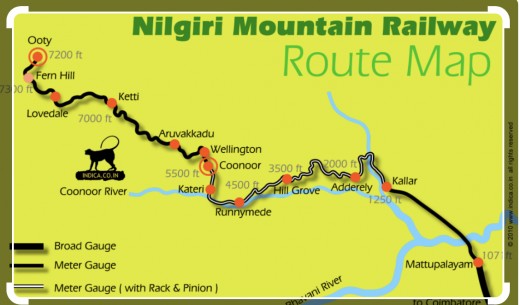
Ooty in Pics
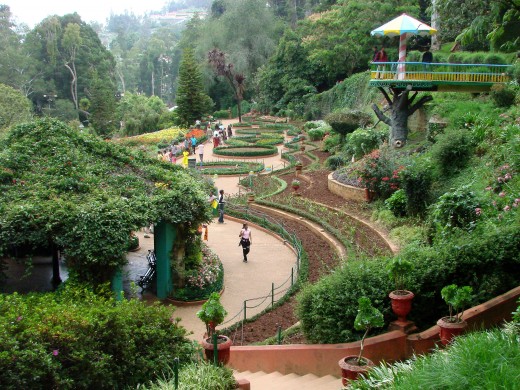

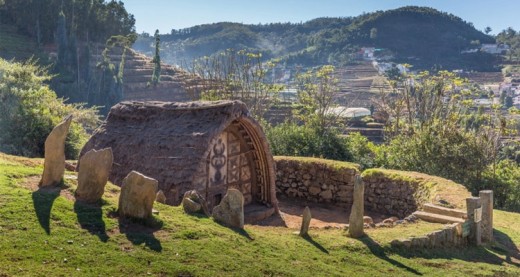
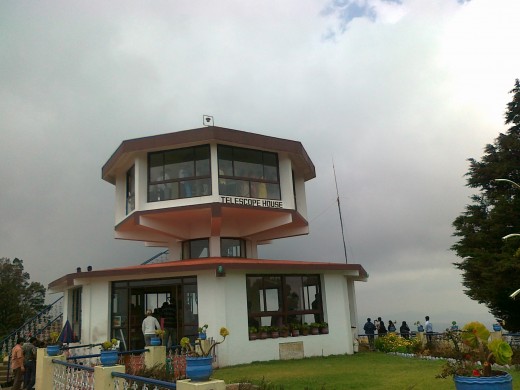
Tourist Destinations- Ooty and around
A lot has changed since the British left India in 1947. Ooty has developed into a bustling hill-station with an estimated 50 Lakh tourists visiting each year. The number increases during the peak summer months as thousands of Indians and foreign tourists alike, flock to Ooty to beat the sweltering hills of the plains down below. But what has not changed ever since her discovery is the beauty and the quaint architecture & ambiance of the land.
For tourists visiting Ooty, the below mentioned places are a 'Must-see' in the itinerary:
1. Botanical Gardens: Laid out in 1847, the 22 acre garden is a visitor's delight. The star attraction of the garden is the 20 million year old fossilised tree. With over a thousand species of indigenous & exotic plans and trees, the botanical garden offers tourists a place of solace and rejuvenation.
2. Ooty lake: No trip to Ooty is complete without a fascinating boat ride in the Ooty Lake. Covering an area of 65 acres, the magnificent boat house constructed by John Sullivan in 1824 offers boat rides of various kinds.
3. Toda Huts: The huts built by the aboriginal tribe Toda are a sight to behold. Do take a little time off and visit these dwellings which can still be found on the hills above the botanical garden as well as in 'Kandal Mund' near Old Ooty.
4. St. Stephen's church: Built and consecrated in 1830, the church retains its original splendour to this day. Set amongst the magnificent backdrop of the wooded hills, the church grants visitors the reminiscence of the bygone era.
5. Nilgiri Mountain Railway: An Unesco World heritage site, the narrow gauge railway connects Ooty to Mettupalayam (near Coimbatore) in the plains. For Train enthusiasts, the train ride is a journey to remember for life. Passing through the valleys, hills and innumerable tunnels, the Nilgiri Mountain Railway is a never-to-be-forgotten experience.
6. Doddabetta Peak: About 10 kms from Ooty lies the highest peak of the Nilgiri mountain range. The Telescope house located at the the peak gives an awesome view of the surrounding hills & valleys.
7. Pykara: Located at a distance of 19 kms from Ooty is the Pykara river. The river cascades into numerous waterfalls through the hills and can be viewed from a bridge on the main road. The pykara dam and boat house are other attractions that are in store for the visitors.
8. Coonoor: At a distance of 35 kms from Ooty is the bustling town of Coonoor (1850 m above sea-level). The town is accessible by road as well as the Nilgiri mountain railway. Coonoor is renowned for its Tea industry and the slopes of the surrounding hills are met with huge acres of tea plantations.
9. Kotagiri: Once dubbed by John Sullivan as a 'Heavenly abode', Kotagiri is connected to Ooty via the Doddabetta Peak. Tit is located at a distance of 32 Kms from Ooty. A visit to Kotagiri is incomplete without undertaking one of the numerous trekking trails. Also, do remember to visit John Sullivan's Bungalow (one of the first by a foreigner in these parts of the land). St.Catherine Waterfall is beautiful- more so because of the 3 km trek route required to reach her.
10. Lakes: The Emerald Lake, Avalanche lake, Porthimund Lake, and Upper Bhavani are some lesser known lakes of interest which nevertheless offer spectacular views. Most of these lakes are located in the reserved forest and have thus remained virtually untouched by civilisation. Prior permission from the forest and wildlife departments are required to visit them.
Ooty in Pics

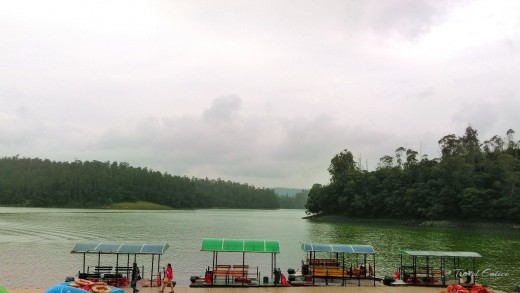
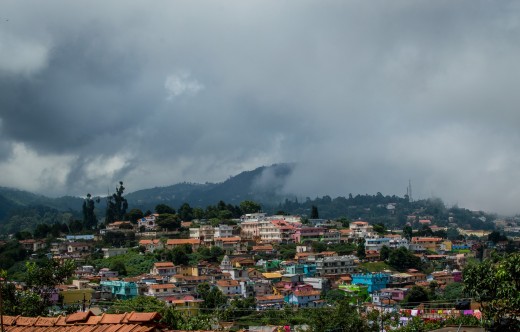
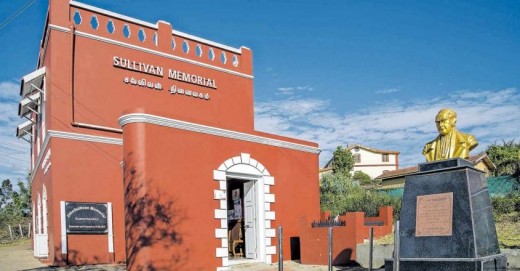
Sight seeing in Coonoor
A traveller's guide to Ooty
Ooty- India- Road Map
Choose your pick!
Which Indian Hill-station is your favorite?
Best time to visit!
Though most of the websites would mention March to July being the best time to visit Ooty, it's actually a misnomer.
Ooty has it's own charm and beauty during all seasons of the year. Though the summer months from March-July would definitely give you a fresh respite from the scorching summer heat, you would also find yourself surrounded by hoards of tourists during this peak season.
July- October would find you amidst mist, fog and rain-clouds sweeping your face, yet the season offers a spectacle of Ooty rarely seen or experienced by the summer tourists. Not to mention the peace and tranquility due to less crowd during the Indian Monsoon.
October- February is cold in Ooty and if you are looking for a holiday of chills & thrills, this is the season.
Things to remember!
ENJOY
| INDULGE
| EXPLORE
|
|---|---|---|
Carry woolens during all seasons!
| Purchase the famous 'Niligiri Oil' from authorised government stores!
| For travel enthusiasts, take the toy train ride from Mettupalayam to Ooty!
|
Try making prior online reservation for accomodation!
| Visit the adjoining wildlife sanctuaries complete with jungle safari & treks. Requires prior booking from the forest department!
| The Nilgiri mountain railway is an UNESCO Heritage site!
|
Give yourself-3-4 days to enjoy Ooty in all her splendour
| Do not forget to purchase the famous 'Ooty Chocolates'. They are delicious!
| Travel to Pykara Lake and Coonoor should be a must in your itinerary!
|
A few points to remember while travelling to Ooty!
Books worth purchasing!
Ooty- Kalhatty Waterfalls
Mettupalayam to Ooty route map!
Your feedback is important!
This content is accurate and true to the best of the author’s knowledge and is not meant to substitute for formal and individualized advice from a qualified professional.
© 2013 Souvik Mukherjee


